If you're shopping SUVs on a tight budget, you'll probably have to settle for something cheap and nasty, right?
Thankfully, no – there are quite a few great-value SUVs on sale that feel more 'theatre box' than 'penalty box'.
Chief among them are the Peugeot 2008 and Nissan Qashqai – a pair of practical family movers that both lavish a little extra attention in the cabin to make the job of driving that little bit easier.
Read on as we pit these two posh SUVs head-to-head to help you pick the best model for you.
Peugeot 2008 vs Nissan Qashqai compared
| Peugeot 2008 | Nissan Qashqai |
Pros:
| Pros:
|
Cons:
| Cons:
|
Styling and design
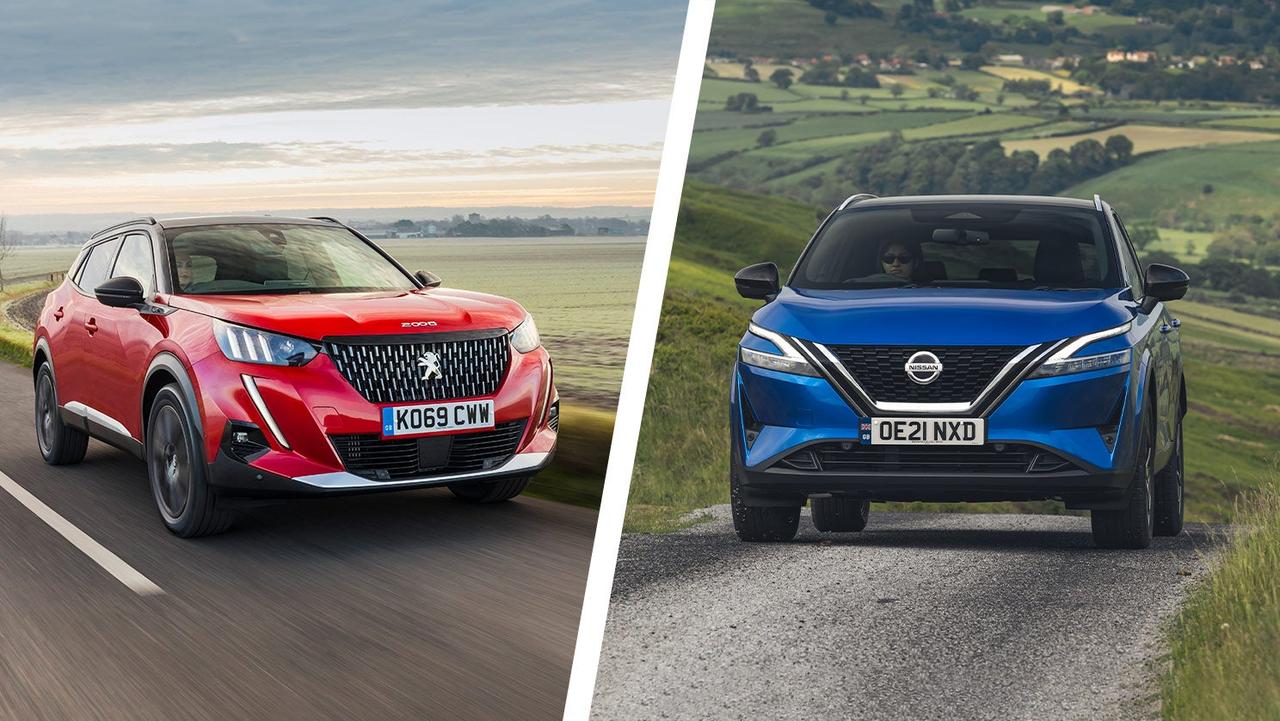
We think both of these models shine best in their cabins but neither car has forgotten about its exterior styling. The 2008 is, to our eyes, one of the more handsome small SUVs on the market with a neat, shield-like front grille sitting between feline-looking, pointed headlights. Elegant surfacing breaks up the side profile and lends it a planted stance, and high-spec models get a contrasting black roof, which visually slims the bodywork down further. Claw-like lines in the running lights and brake lights add a little extra detail.
The Qashqai is slightly more restrained overall, although we appreciate the way its wide V-shaped front grille forms the edges of its thin, blade-like headlights. A handful of crisp fold lines define the car's side profile but, again, the overall shape is simpler and less sculpted than the Peugeot. There are still neat details to pick out, however, like the faux window panel in the rear pillar that gives the impression of a floating roof. We also quite like Nissan's Blade Silver and Gun Metallic paints, which look quite posh in person.
Interior and practicality
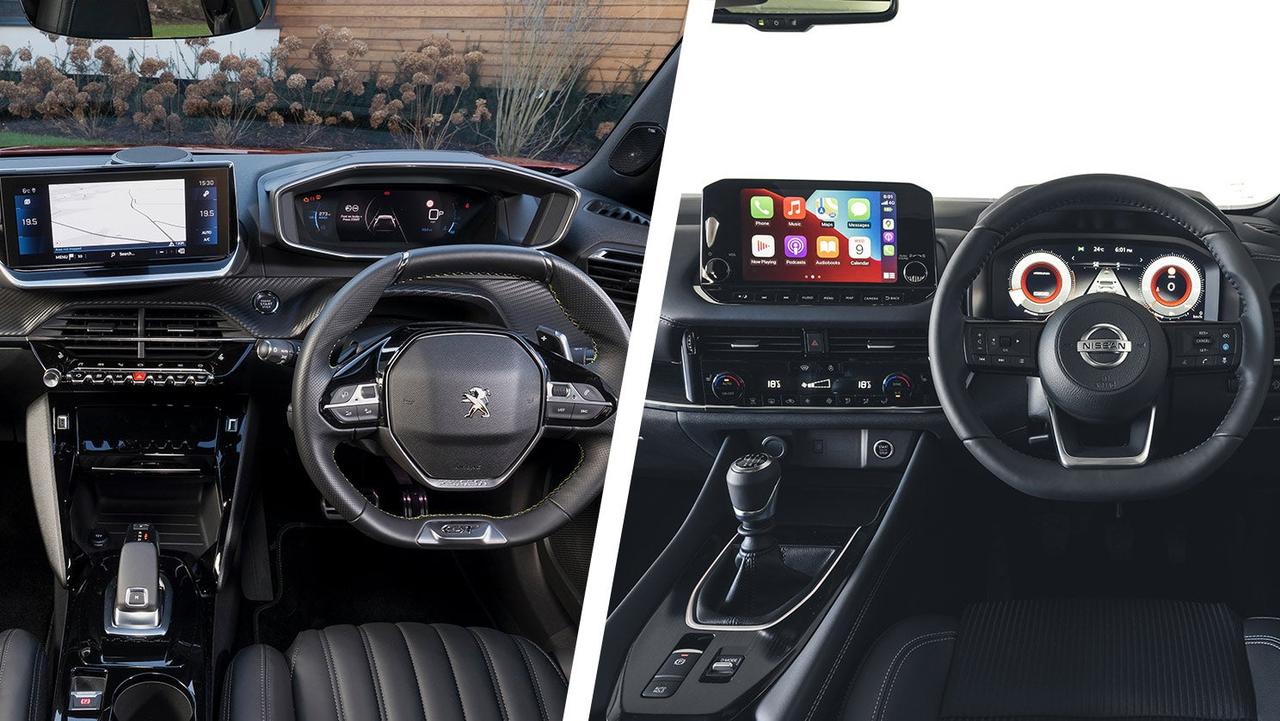
Both cars score well in their cabins, despite their apparent affordability. The Peugeot is a little flashier – there's careful use of metal-effect trim around the dashboard, infotainment system and instruments, plus fancy-looking piano-key-style buttons in the middle for important functions. It also features the brand's distinctive small steering wheel that sits below the dials – this might take a minute or so to get used to, but makes three-point turns a doddle. The Qashqai is a touch more plain but still feels posh thanks to soft-touch materials on the dash and strong build quality – we also like the relatively thin spokes on its steering wheel.
The Peugeot's focus on form ahead of function continues through to its infotainment system. Sat on its own protruding shelf atop the dashboard, the screen is wide and looks impressive, with sharp, modern graphics. Sadly, the menus themselves take a bit of learning to find your way around and the screen's responses to touches are annoyingly slow. The Nissan's screen isn't as impressive to look at, but it's easier to use with faster responses and clearer graphics, plus proper, physical shortcut buttons to jump between functions.
As for space, the larger Qashqai takes the win here. That's not to say family buyers will struggle in the Peugeot – it has reasonably good rear-seat space, wide-opening doors and a usefully square cargo area. The Qashqai, however, is simply bigger – there's even more space on the back seat, allowing tall adults to stretch out, and the 504-litre boot is a solid 70 litres up on the 2008's, meaning less wrestling to get a pushchair or portly pooch loaded in.
Engines and performance
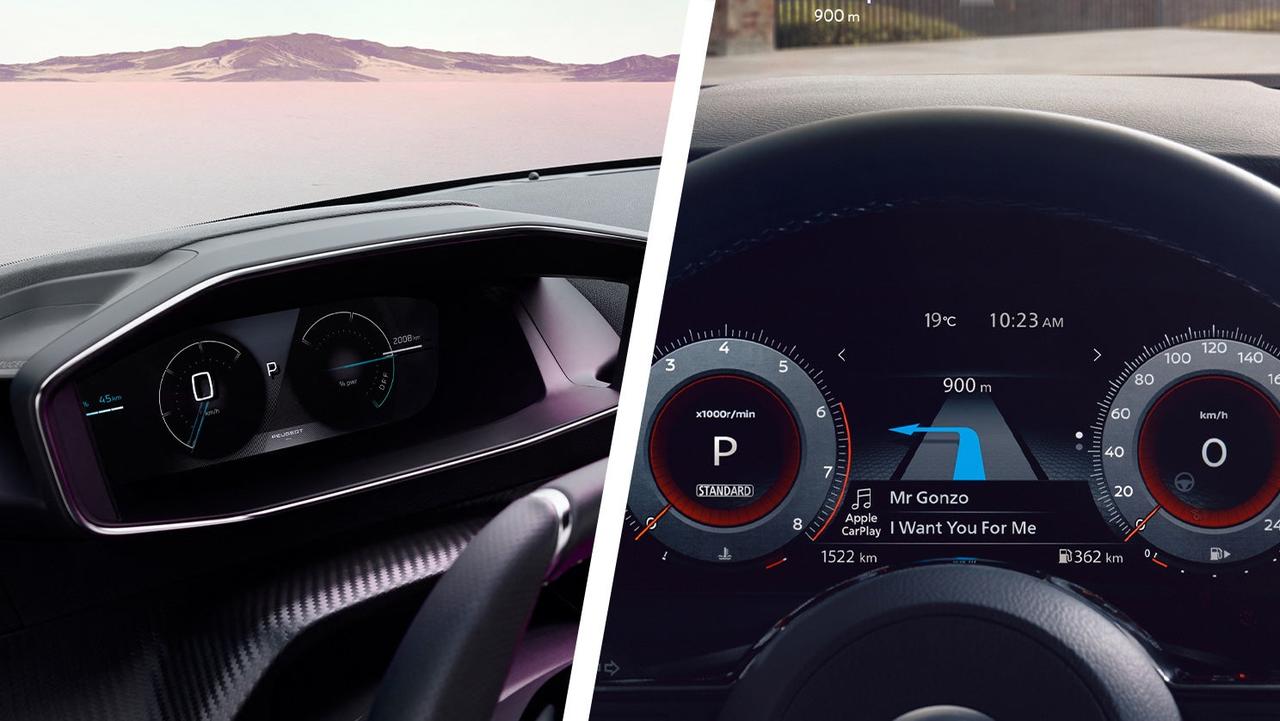
You have three options for powering your 2008 – petrol, diesel or electric. Most models are equipped with the company's 1.2-litre turbo petrol engine and it's easy to recommend. Even basic 100hp versions have enough power to feel relaxed on the move, while the upgraded 130hp model feels positively nippy at lower speeds, and the 155hp version even more so. The 1.5-litre diesel options are more sedate but return excellent long-range fuel economy, or there's a zippy electric model with a range of more than 200 miles – as a used buy, this is priced roughly in line with mid-range petrol cars.
The majority of Qashqai models come with a 1.3-litre turbo petrol engine with either 140 or 158hp, aided by mild-hybrid tech. Both versions have enough power to move the Qashqai without complaint and remain impressively quiet while doing so, but they can't quite match the Peugeot's more muscular 1.2-litre petrol for performance – in part because the Qashqai is a larger, heavier car. The Nissan also gets the intriguing e-Power hybrid, which uses a 1.5-litre petrol engine as a generator to recharge a battery pack that drives a punchy electric motor – this option is smoother and more powerful, but costs quite a bit more, too.
Driving
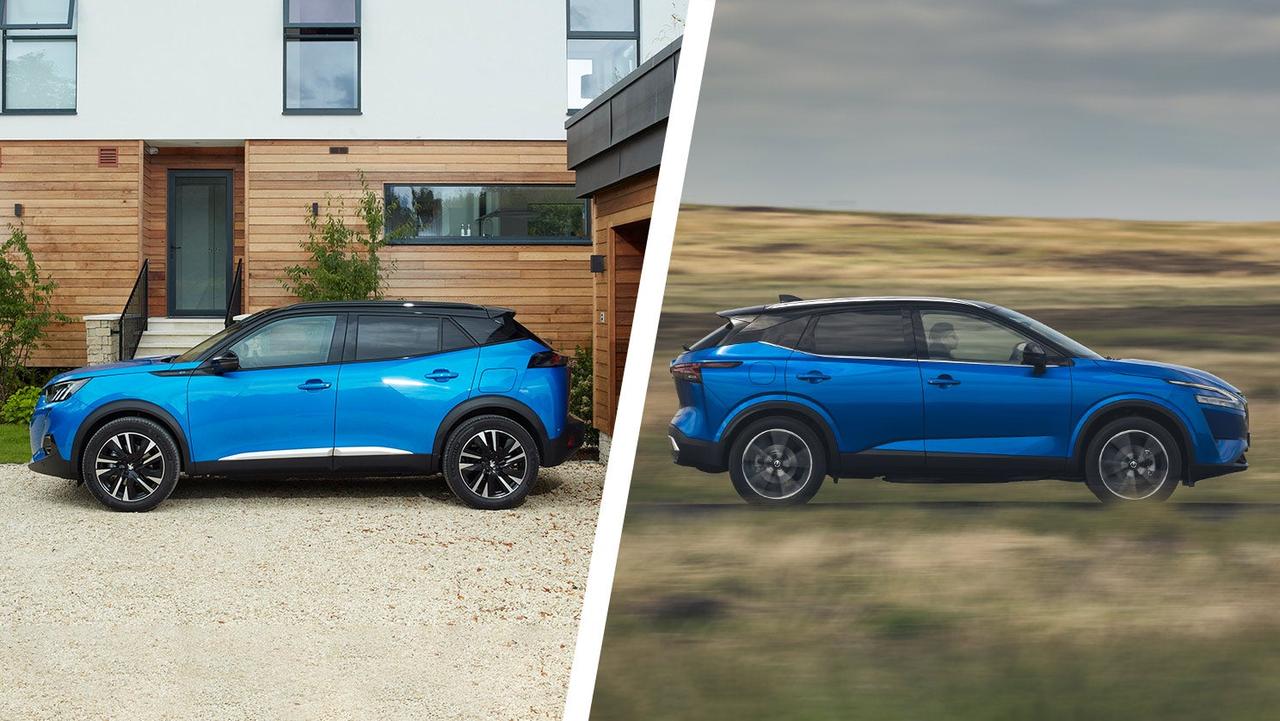
While the Peugeot has the edge for engine performance, it doesn't quite back it up with class-leading handling. The controls are intuitive and light enough that it's easy to place on the road, but there's some noticeable body roll if you fling it into a corner with too much enthusiasm. This is a car that prefers to cruise around and that's where it's at its best – the soft suspension takes the edge off bumps and the punchy engine never feels stressed as it's getting up to speed.
The Qashqai couldn't be described as 'sporty' but it feels noticeably more tied down than the 2008. Body roll is well contained through corners, which means the front end is slightly keener to pull the car towards the apex. It's not as soft as the Peugeot, but the suspension still does a great job of tuning out the worst thumps, with only the largest potholes sending shudders through the car's frame. The petrol engines don't feel quite as strong as the 2008's but they remain hushed at all times, so hitting high speeds is a fairly calm experience.
Value and reliability
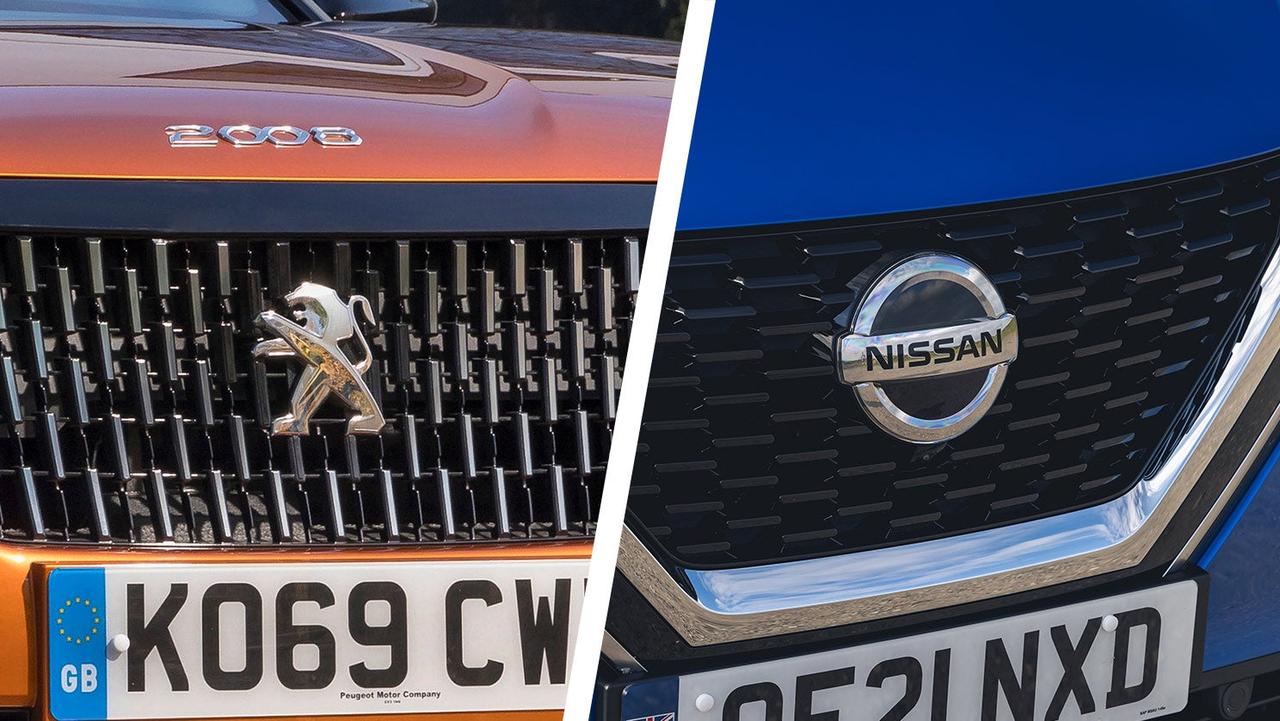
Whichever way you slice this comparison, both the 2008 and Qashqai come out looking like great value. Considering their interiors are practical and trimmed almost as nicely as some more 'German' rivals, they undercut many mainstream rivals in this class – especially on the used market.
The 2008 is the smaller of the two and has been available for a little longer – both of those facts mean it's available for less money on the used market. Although, with that in mind, you could always shop fairly recent examples of the previous-generation Nissan Qashqai, which are available at a substantial discount.
Sticking with the current Qashqai, you'll pay a little more than you will for an equivalent Peugeot, but you'll get a noticeable boost in cabin space – something that'd cost you quite a lot more if you traded up to the larger Peugeot 3008. Plus, the savings available on one-to-two-year-old Qashqais compared to their brand-new price make it an easy purchase to justify.
We've not heard any significant complaints about either model from owners so we expect both to be able to deliver years of reliable service. As ever, consider adding an extended warranty for greater long-term peace of mind.
Which is best?
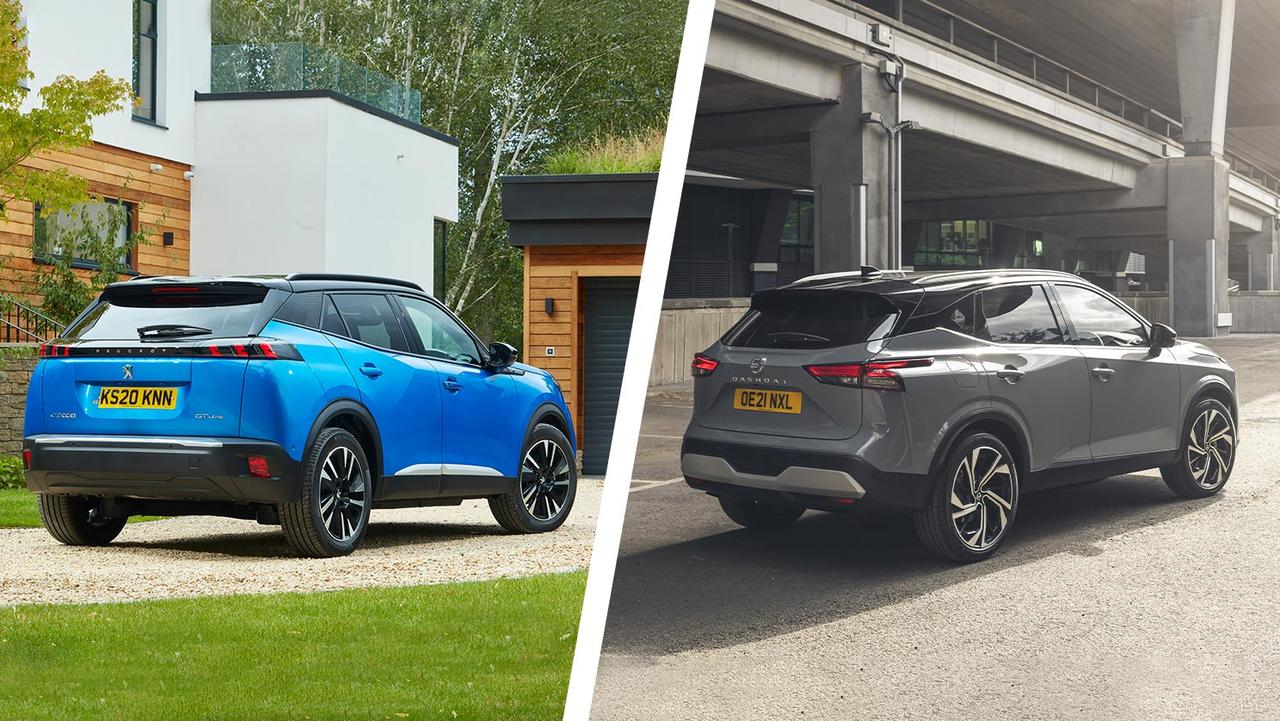
Your choice here really boils down to choosing between a slightly more affordable SUV with a fancy-looking interior – the Peugeot – or spending a little more to get a larger, more grown-up model like the Qashqai.
Of course, you should also consider running costs and, with the option of both long-legged diesels or a battery-powered electric model, the Peugeot has more choices for buyers with different driving needs. Whichever Qashqai you pick, it's ultimately going to be powered by petrol.
Motorpoint has an enormous selection of great-value used Peugeot 2008 and used Nissan Qashqai cars for sale. To see even more tempting options, check out our picks for the best small SUVs you can buy.



































